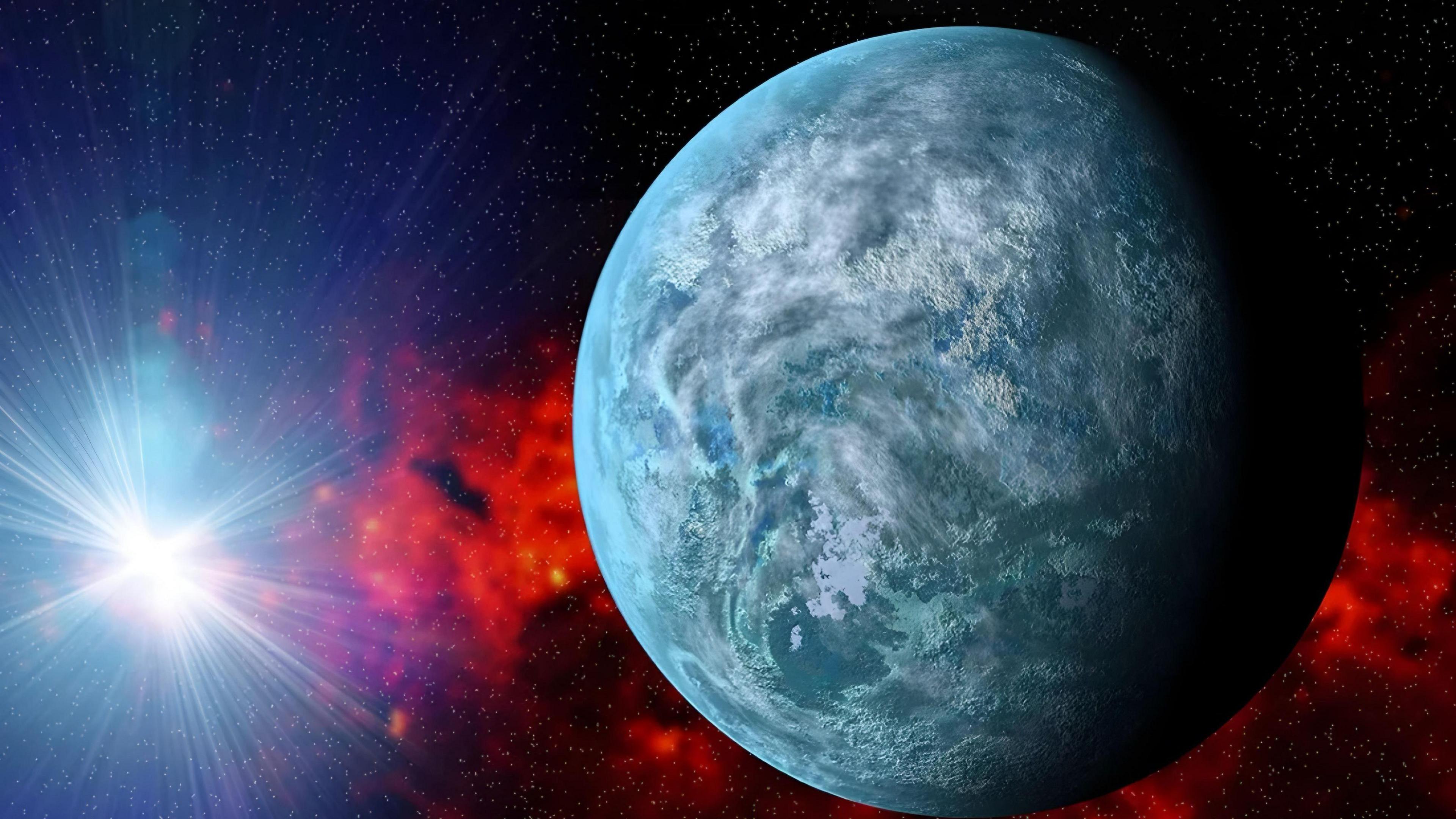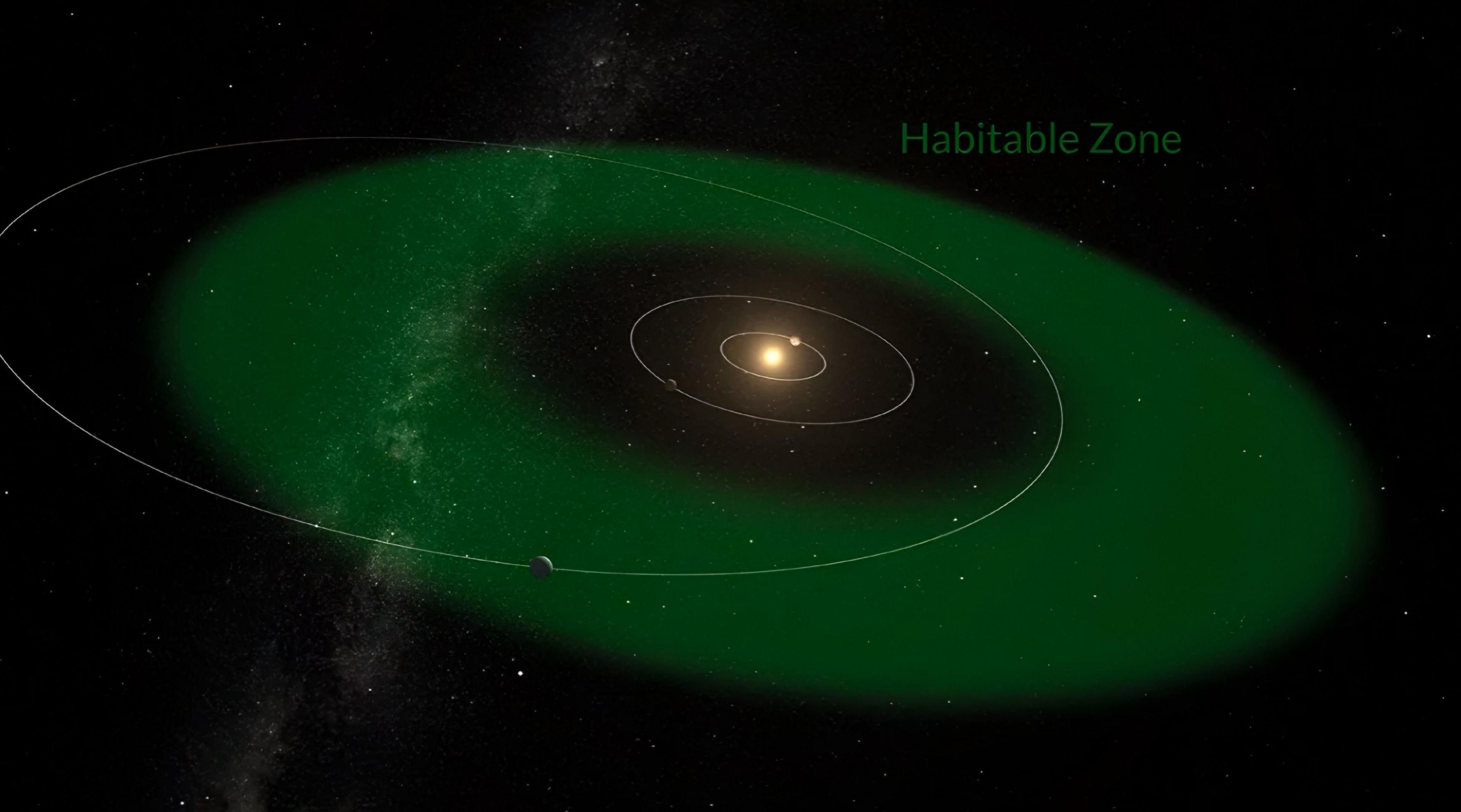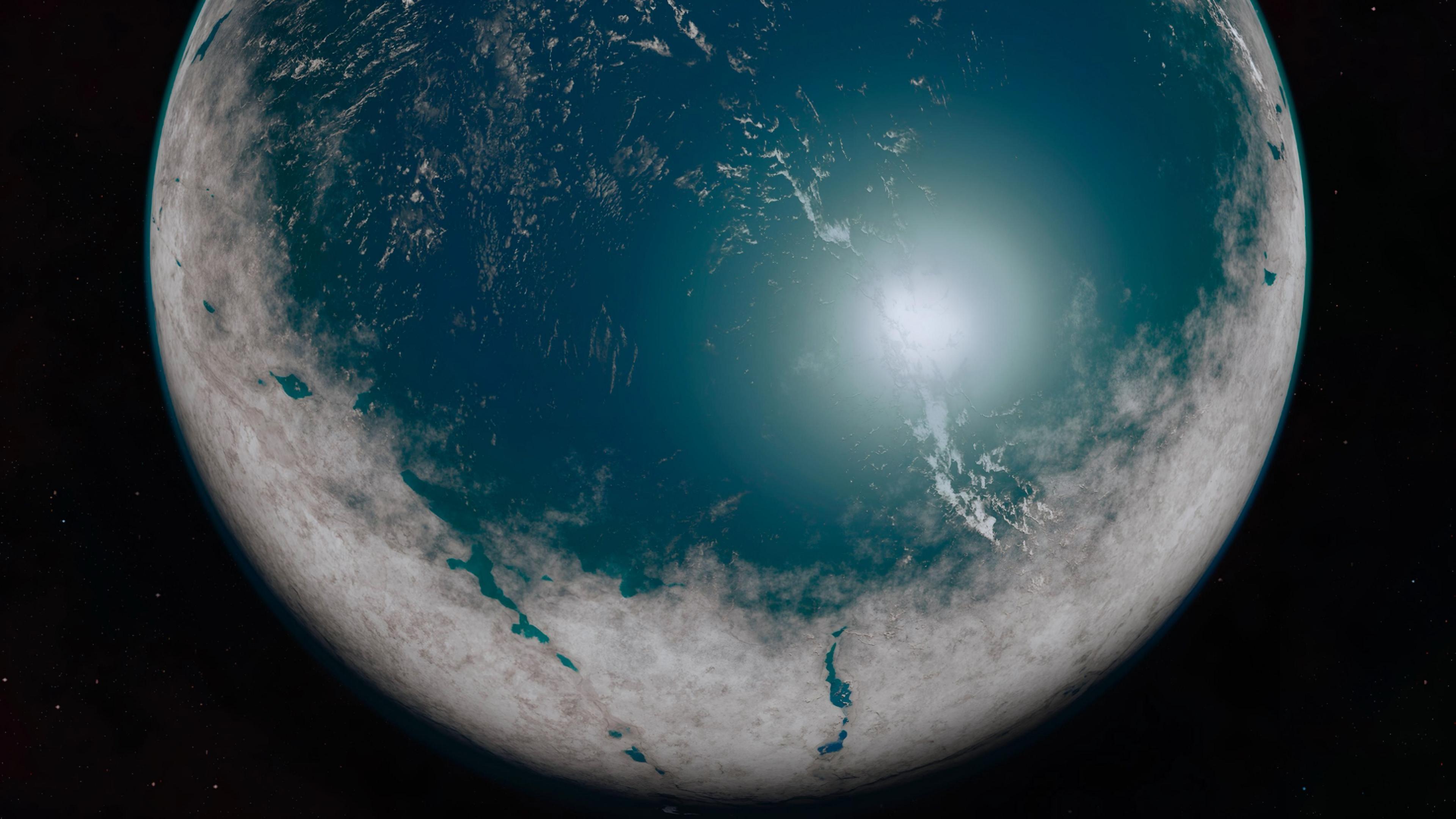Could this large Earth-like planet be home to alien life?

Artist's impression of a super-Earth exoplanet
- Published
Astronomers have discovered a large Earth-like planet orbiting a distant star that could be home to alien life.
The exoplanet - the name for a planet beyond our solar system - has the catchy name: HD 20794 d.
For some of its journey around its star, it lies with an area known as the "habitable zone" that means it's not close enough that it's too hot, and not too far from the star that it's too cold.
It also means, just like Earth, it's much more likely to have water on its surface - a key ingredient for life.
The Big Question: Do aliens exist? Video, 00:01:47
- Published15 May 2020
Nasa has been looking into UFOs... so what did they find?
- Published14 September 2023
Scientists discover giant planet with super speedy winds
- Published22 January
HD 20794 d has been described by experts as a super-Earth, an Earth-like planet that's much larger than our own.
It orbits a star, much like our own Sun, and is located just 20 light years away - which is quite close for objects in space.
That relatively 'close' distance means the planet and its star are much easier to study.
And it’s hoped that further research will give scientists an even better idea of what life, if any, could exist on the surface.
What is a system’s habitable zone?

Artist's impression of exoplanet planet HD 20794 d and its orbit in and out of its star's habitable zone
The habitable zone is often referred to as the Goldilocks zone, because it's 'not too hot and not too cold', and just the right distance from its star for liquid water to exist on its surface.
But where exactly the habitable zone exists around a star depends on the star itself: Its size, mass and brightness.
In the case of our own Sun and solar system, the habitable zone includes Earth and Mars.
Could life survive on the planet?

Any water on the planet’s surface could turn to ice during part of it‘s orbit around its star.
The planet itself lies in an eccentric orbit, which means its journey around its star is not perfectly circular.
As a result, it travels in and out of the habitable zone as it orbits, meaning a year on the planet, lasting 647 days, will have vastly different conditions during seasons.
If there is water on HD 20794 d, it could change from liquid to ice during the course of a year on the surface.
